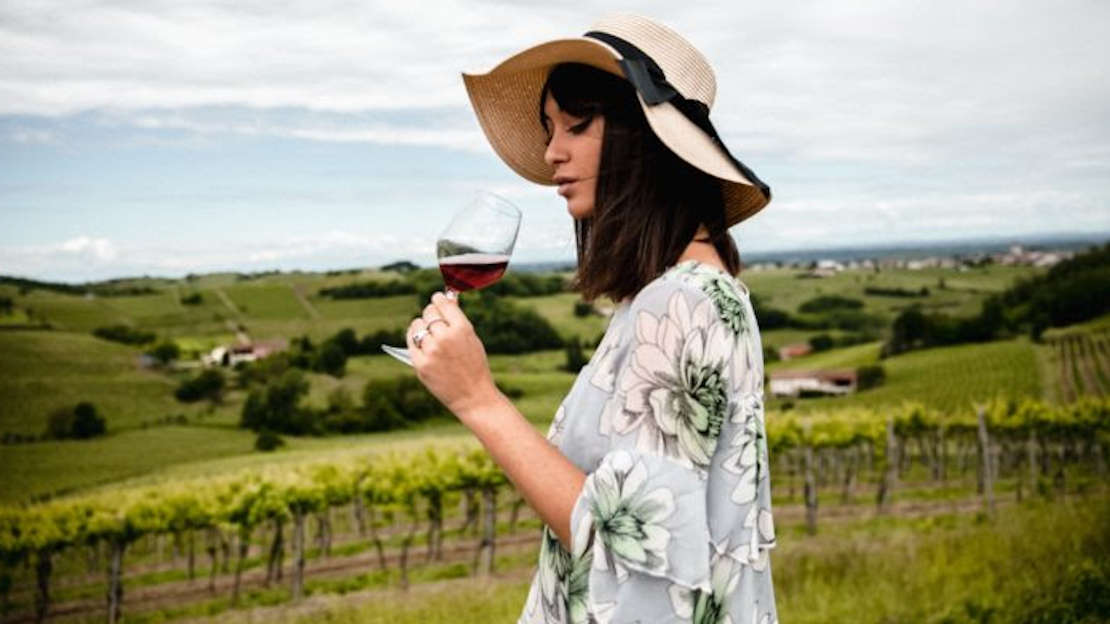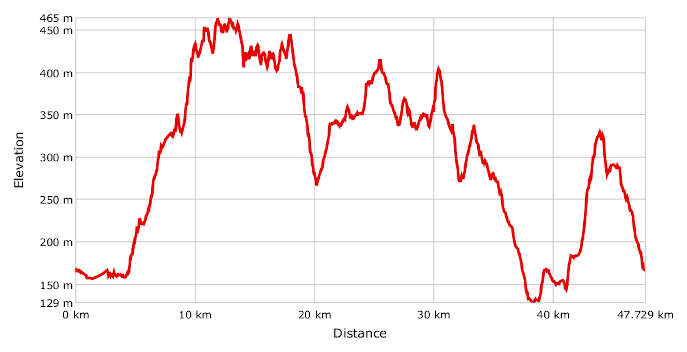
- Bike: strada
- Difficulty: ***
- Distance: 48 km
- Altitude difference: 336 m
- Total ascent: 1054 m
- Total descent: 1053 m

As with all truly great wines, Brachetto's story is one of legend and fascination. One of the most evocative and salacious stories about the vinum acquense attributes wondrous aphrodisiac properties to it. Popular belief holds that in the days of the Roman Empire, first Julius Caesar and later Mark Anthony sent ahead wineskins full of vinum acquense before visiting the beautiful Cleopatra's court in Egypt. The queen appreciated how the wine reawakened her legendary lovers' libidos.
Shared history, land and properties seem to link vinum acquense and today's Brachetto, which can lay claim to being its heir, given that the older wine was already present in Acqui Terme and the surrounding area in ancient times.
More recently, in 1817, the naturalist Gallesio defined it as 'famous wine', classifying it as a dessert wine given its alcoholic properties and light colour and the way it took on the flavour of port after ageing. He also noted that both sweet and sparkling Brachettos were known and sold well in the South American markets. The first official and scientific definition was by Garino Canina in 1922. Among luxury wines, Brachetto belongs to the category of sweet and aromatic reds. It is a wine with a special aroma, slightly alcoholic and sugary, not very colourful and mostly drunk sparkling.
Brachetto grapes are grown in 26 municipalities in the area, eight of them in the province of Alessandria and 18 in Asti. It is a hilly area between the towns of Acqui Terme and Nizza Monferrato, known as the colline degli Aromatici (the hills of the aromatic wines). The suggested route covers part of the area in which Brachetto d'Acqui wine is produced, passing through nine municipalities. It is almost entirely over small tarmac roads with magnificent views.
Begin in Acqui Terme, in front of the regional wine shop and Consorzio Tutela del Brachetto d’Acqui at Via Abramo Levi 7. The route starts in the direction of Terzo, which you'll reach after about 3 km. It is a hilly route, beginning at 129 m in altitude and reaching 465 m at the highest point, near Montabone, which you'll reach from Terzo after climbing about 5 km. You must explore the centre of the village, where the painter Guglielmo Caccia, known as the Moncalvo, was born (Montabone, 9 May 1568 – Moncalvo, 13 November 1625). Take the SP 43, then turn left towards Regione Valdoche. A little up-and-down road will bring you to Rocchetta Palafea. Take the SP 114 along the rise of the hill, through vineyards on either side, and you'll find the 17th-century country chapel of San Rocco. Turn right here onto Regione Cornigliano and then left along a pretty little street to Castel Boglione, where you'll find Cantina Sociale Araldica. Take the SP 45 in the direction of Canelli, on the border of the area that produces Brachetto d’Acqui DOCG. You'll arrive at the church of San Sebastiano, where you must turn right onto Strada Carrobbio and then, further on, right onto Strada Noceto. At the end of this road turn left onto the SP 456, where you must turn right and carry on until another right to Castel Rocchero. If there's one village where vine monoculture has shaped the surrounding landscape, it's Castel Rocchero. It's worth stopping here for a visit. The road linking the village with Nizza and Castel Boglione provides an uninterrupted geometrical view of rows of vines, stretching as far as the eye can see over the soft outlines of the hills and creating beautiful colours. Head back to the point you arrived at and turn right onto the SP 456. At the hamlet of Caciau you'll find Torre Vinaria della Cantina Sociale di Castel Rocchero. For over half a century, around a hundred different producers have been turning their grapes into celebrated local wines, including Brachetto d'Acqui. As you're more than halfway along the route, stop for a tasting at one of the many farms you'll pass on the way. Carry on along Strada del Turchino and turn left after about 300 m for Bricco Oddone. At the fork in the road, turn right and keep going on to Alice Bel Colle. Enjoy pedalling along the little streets along the ridge of the hills, surrounded by the sea of vineyards. Another potential stopping point for a tasting is the Bottega del Vino winery. Carry on along the route dedicated to 'Re Bacco' (King Bacchus) for 3 km until you arrive at Ricaldone, the village where the unforgettable singer-songwriter Luigi Tenco was born. Here, only if you fancy it of course, you can visit Cantina Sociale Tre Secoli, forged from the old cooperatives of Mombaruzzo and Ricaldone, founded in 1887 and 1947 respectively. Get back on your bike and out of the village along Via Sebastiano. Turn left and follow the directions for Sant'Andrea. Carry on until the gates of Caranzano, then along Regione Torrazza to Strevi. From the church of San Rocco you must take Strada Comunale della Maggiora, from where you can head downhill for 3 km back to your starting point in Acqui Terme.
